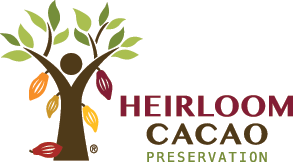/ Chocolate Resources / Chocolate Blog / Butter: Part One

Butter: Part One

Butter sweet butter! I’m going to admit it, I love butter. I grew up in a culture where the culinary legacy is a weird hybrid of Eastern European and pioneer food – my family is known to joke that the only spices are fat, sugar, salt, and pepper. I come by my love of butter honestly – when I was a child my grandfather used to slather thick slices of homemade bread for me with a layer of butter thicker than my little fingers. I have always loved it, and like the best of relationships, I am always trying to understand it better. This delicious stuff is made of three components: water, milk solids, and fats. How these components interact with your chocolates and confections can influence the flavour, texture, and shelf life of your products.
Food scientist Beverly J. Tepper* studies how we perceive fats, and she says: “Ask any sensory scientist or product developer and they will respond that fats are perceived primarily by flavor and texture cues, and that the pleasantness of these 2 components determines a food’s palatability and acceptability… Neural imagining studies have begun to unmask the subjective experience of fat in the mouth and to connect this experience to liking. [An] article by Rolls (2012) provides evidence that the texture of fat in the mouth is represented in areas of the cortex that have been implicated in chemosensory perception and sensory pleasure.” Now doesn’t this sentence taste good?
So what do we as chocolatiers do with this beautiful stuff? Why is it in our chocolates and confections and how can we use it best?
Butter is commonly used in chocolate making as an enhancer of the texture and flavour of ganaches. Butterfat adds a silky smoothness to ganache that can’t be introduced any other way. Its melting point is lower than that of cocoa butter, so it helps to soften and emulsify your ganaches. As well, and likely more important to our consumer, is that combining dairy butter with cocoa butter results in a more complex fat profile of the piece. Our tastebuds are heavily influenced by fats in the perception of flavours, so the more different types of fats we give it, the more rich the flavour experience will be. The combining of different types of fats also results in a lower melting temperature of the ganache than that of butter or chocolate alone, allowing the flavours to be released on the tongue more efficiently, increasing the intensity of flavour.
In caramel and toffee making, butter provides the fatty component of the emulsion. The dairy solids in the butter brown during cooking to provide rich flavours that cannot be created by sugar alone.
In a future post, we’ll talk about choosing your butter, and how it will impact the final product, as well as working through a butter experiment to find the best type of butter for your project.
To read the other posts in this series click on our Bean2Bonbon Blog overview page.
*Tepper, B. (n.d.). The Taste for Fat: New Discoveries on the Role of Fat in Sensory Perception, Metabolism, Sensory Pleasure, and Beyond. Journal of Food Science, Vi-Vi.
Want to learn more about making delicious chocolates and confections? Check out our Professional Chocolatier Program!
Get reminders about upcoming classes! To receive program updates and news, click the link below.
Photography by Jessica Washburn, Bliss Chocolatier and Ecole Chocolat





